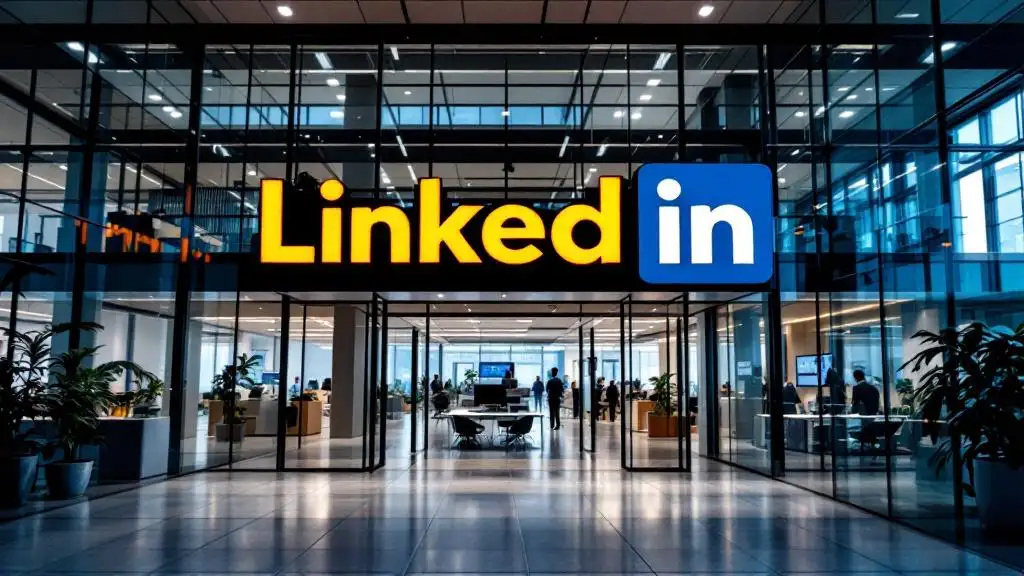Companies Leading the Pack in Digital Advertising Investment
Keeping up with the evolving landscape of digital advertising is crucial for companies looking to reach their target audience effectively.


Companies Leading the Pack in Digital Advertising Investment
Digital Advertising Spending Trends
Keeping up with the evolving landscape of digital advertising is crucial for companies looking to reach their target audience effectively. In this section, we will explore the overview of digital ad spending and the industries leading the way in digital advertising investments.
Overview of Digital Ad Spending
Global digital ad spending has been on a steady rise, reaching over $600 billion for the first time. This growth can be attributed to the increasing shift towards digital platforms for advertising due to their wide reach and targeting capabilities. Companies across various industries are allocating a significant portion of their marketing budgets to digital advertising to capitalize on the opportunities presented by online platforms.
Industries Leading Digital Ad Spending
The retail industry is at the forefront of digital ad spending, accounting for a substantial portion of the overall expenditure. It is projected that the retail industry will spend more on digital advertising in 2023 than the combined spending of the five lowest spending industries. The retail sector's focus on digital advertising can be attributed to the growing trend of consumers shifting towards online shopping. In 2020, consumers spent $900 billion more at online retailers compared to the prior two-year trend. This change in consumer behavior has prompted retailers to invest heavily in digital advertising to capture the attention of online shoppers.
Another industry that has embraced digital advertising is the technology sector. Technology and software companies allocate a significant portion, approximately 25% to 50%, of their marketing budgets to digital marketing [3]. This emphasis on digital advertising enables them to stand out among competitors and effectively reach their target audience in the digital space.
The healthcare industry is also making notable investments in digital advertising. Companies like Pfizer, a leading pharmaceutical company, have allocated a significant portion of their marketing budget to digital advertising. In 2018, Pfizer's advertising spend amounted to over $1.2 billion, with 2% of its total revenue dedicated to advertising. This substantial investment in digital marketing within the healthcare industry highlights the importance of reaching and engaging consumers through digital channels.
While these industries are at the forefront of digital ad spending, it's important to note that companies across various sectors are recognizing the value of digital advertising and are increasing their investments accordingly. With the continuous growth of digital platforms and the increasing influence of online consumer behavior, allocating a significant portion of marketing budgets to digital advertising has become a strategic imperative for businesses aiming to stay competitive in the digital age.
Allocation of Marketing Budgets
Understanding how companies allocate their marketing budgets is crucial when examining digital advertising spending trends. In this section, we will explore the average percentage of revenue spent on marketing and the impact of COVID-19 on consumer behavior.
Average Percentage of Revenue Spent on Marketing
On average, companies allocate approximately 9.1% of their revenue to marketing efforts. However, it's important to note that this percentage can vary depending on the size and industry of the company.
Large businesses tend to allocate around 13% of their annual revenue to marketing, while smaller businesses typically spend around 10% [4]. Industries such as education services invest over 18% of their revenue in marketing, recognizing the importance of effective advertising strategies. Additionally, the healthcare industry is expected to increase their marketing budgets by 10% to reach their target audience effectively [4].
When it comes to digital advertising, marketers allocate approximately 8% of their revenue to digital commerce efforts [4]. B2C companies tend to invest more in digital commerce compared to B2B companies. Sectors such as retail and financial services allocate significant budgets to digital commerce in order to build stronger customer relationships, gain valuable insights, and foster brand loyalty.
Impact of COVID-19 on Consumer Behavior
The COVID-19 pandemic has had a profound impact on consumer behavior, particularly in the digital realm. With lockdowns and restrictions in place, consumers turned to online shopping, resulting in a significant increase in e-commerce spending.
In 2020, consumers spent $900 billion more at online retailers compared to the prior two-year trend. This shift in consumer behavior has created new opportunities and challenges for businesses, prompting them to adapt their marketing strategies to effectively reach their target audience.
Furthermore, 63% of American consumers now shop more online than they did before the pandemic. This drastic change in behavior has accelerated the need for companies to invest in digital advertising and marketing initiatives in order to connect with their customers in the digital space.
As companies navigate the evolving landscape, it is crucial for them to allocate a significant portion of their marketing budgets to digital advertising in order to effectively reach and engage with consumers in the online realm. By adapting to changing consumer behaviors and investing in digital marketing strategies, businesses can position themselves for success in the increasingly digital marketplace.
Embracing Digital Marketing Technologies
As the world of advertising continues to evolve, companies are embracing digital marketing technologies to stay ahead of the competition. Two key trends in this area are the integration of AI in marketing and the growth of global digital ad spending.
Integration of AI in Marketing
Artificial Intelligence (AI) is revolutionizing the marketing landscape by providing companies with powerful tools to enhance their advertising efforts. AI technologies can analyze vast amounts of data, identify patterns, and generate valuable insights to optimize marketing strategies. By leveraging AI, companies can better understand customer behavior, personalize advertising campaigns, and improve overall marketing effectiveness.
According to a source, 90% of brands plan to have budgets dedicated to AI marketing technology in 2024. This demonstrates the increasing importance of AI in driving marketing success. AI-powered solutions can automate various marketing tasks, such as customer segmentation, content creation, and campaign optimization. By automating these processes, companies can save time, reduce costs, and deliver more targeted and personalized advertising messages to their audiences.
The integration of AI in marketing also allows for real-time data analysis, enabling companies to make data-driven decisions and quickly adapt their strategies based on consumer trends and preferences. With AI-powered tools, marketers can gain actionable insights into customer behavior, predict future marketing trends, and optimize ad targeting to maximize return on investment.
Growth of Global Digital Ad Spending
Digital advertising has become a cornerstone of marketing strategies worldwide, with companies increasing their investment in this area. In fact, global digital ad spending surpassed $600 billion for the first time, as reported by a source. This growth is driven by the increasing importance of digital channels and the shift in consumer behavior towards online shopping.
The retail industry, in particular, has emerged as a key player in digital ad spending. According to eMarketer, the retail industry is projected to spend more on digital advertising in 2023 than the five lowest spending industries combined. This industry's rapid growth rate solidifies its position at the top of the digital ad spending pyramid.
The COVID-19 pandemic has further accelerated the growth of global digital ad spending. With lockdowns and social distancing measures in place, consumers turned to online retailers, leading to a significant increase in online shopping. As reported by a source, consumers spent $900 billion more at online retailers in 2020 compared to the prior two-year trend. This surge in online consumer spending has prompted companies to allocate more of their marketing budgets to digital advertising to capture the attention of online shoppers.
By embracing digital marketing technologies and increasing investment in digital ad spending, companies can effectively navigate the evolving advertising landscape and connect with their target audiences in a more personalized and impactful way. The integration of AI in marketing and the growth of global digital ad spending are essential trends to watch as companies strive to stay competitive in the digital age.
Case Studies in Digital Advertising
To gain insights into the digital advertising landscape, let's explore three notable case studies of companies that have made significant investments in digital marketing: Pfizer, Amazon, and Coca-Cola.
Pfizer's Digital Marketing Investment
Pfizer, a leading pharmaceutical company, has recognized the importance of digital marketing in reaching its target audience. In 2018, Pfizer allocated over $1.2 billion, approximately 2% of its total revenue, to advertising, indicating a substantial investment in digital marketing within the healthcare industry. By utilizing various digital channels, Pfizer aims to raise awareness about its products, engage with consumers, and drive sales.
Amazon's Focus on Search Engine Marketing
As a dominant force in the retail industry, Amazon has demonstrated a strong emphasis on digital advertising, particularly search engine marketing. In 2015, Amazon allocated a significant 91% of its entire marketing budget to search engine marketing. This strategic investment showcases Amazon's recognition of the importance of search engines in driving traffic and conversions. By leveraging search engine marketing techniques, such as pay-per-click advertising and search engine optimization, Amazon maximizes its online visibility and attracts potential customers.
Coca-Cola's Marketing Expenditure Strategy
Coca-Cola, a global leader in the food and beverage industry, has long been known for its strong brand presence. To maintain and enhance its market position, Coca-Cola has consistently invested in marketing. In 2018, Coca-Cola allocated 18% of its total revenue to marketing, reflecting a substantial investment in the food and beverage industry. By utilizing digital advertising strategies, such as social media marketing and influencer collaborations, Coca-Cola aims to engage with consumers on various online platforms and reinforce its brand messaging.
These case studies highlight how companies across different industries recognize the value of digital advertising. By investing significant resources into digital marketing, Pfizer, Amazon, and Coca-Cola have been able to effectively reach their target audiences, drive brand awareness, and achieve their marketing objectives. The success of these companies serves as inspiration for others looking to make an impact in the digital advertising landscape.
Top Advertising Platforms
In the realm of digital advertising, certain platforms have emerged as leaders, offering marketers the ability to reach a wide audience and achieve impactful results. Among the top advertising platforms are Google Ads, Facebook Ads, and the rising importance of Instagram and TikTok.
Google Ads Dominance
Google Ads stands out as the backbone of digital advertising, setting a high standard for what effective digital advertising can achieve. It offers a wide range of advertising formats and targeting options, allowing marketers to maximize their reach and impact. With billions of searches conducted on Google every day, this platform provides unparalleled access to potential customers. Marketers can leverage various ad formats, including search ads, display ads, video ads, and more, to connect with their target audience and drive meaningful engagement and conversions.
Facebook Ads Effectiveness
Facebook Ads offers unmatched ability to connect marketers with a broad yet finely segmented audience. The platform's extensive user base and sophisticated targeting options make it one of the best ad platforms for those seeking to reach a diverse range of users. With Facebook's powerful audience targeting capabilities, marketers can tailor their ads to specific demographics, interests, and behaviors. This level of precision targeting enables advertisers to deliver personalized messages that resonate with their intended audience. Additionally, Facebook's ad formats, such as image ads, carousel ads, and video ads, provide creative flexibility to engage users effectively across the social spectrum [5].
Rising Importance of Instagram and TikTok
Instagram and TikTok have gained prominence as powerful platforms for digital advertising, capturing the attention of younger audiences and beyond. Instagram's visually-driven nature and emphasis on eye-catching content have made it a preferred platform for brands looking to engage users with compelling visuals. Instagram Ads offer various ad formats, including photo ads, video ads, and carousel ads, enabling marketers to showcase their products or services in a visually appealing manner. With its massive user base, Instagram provides ample opportunities for brands to build brand awareness, drive engagement, and generate leads.
Similarly, TikTok has emerged as a platform that captivates users with short-form videos and creative content. With its rapidly growing user base, TikTok offers advertisers the chance to reach a younger demographic and engage with them through innovative ad formats. Brands can leverage TikTok Ads to create engaging and entertaining content that aligns with the platform's unique user experience, allowing them to connect and resonate with their target audience in a meaningful way.
As the digital advertising landscape continues to evolve, these top advertising platforms provide marketers with a diverse range of options to effectively reach and engage their target audience. By understanding the strengths and opportunities each platform offers, marketers can develop strategic advertising campaigns that drive results and meet their marketing objectives.
Shifts in Digital Advertising Landscape
As the digital advertising landscape continues to evolve, various trends and changes are shaping the industry. In this section, we will explore market share trends in digital advertising and the impact of regulatory changes on advertising practices.
Market Share Trends in Digital Advertising
The market share of digital advertising spending has been experiencing shifts in recent years, with incumbents losing their dominance. According to PwC, the market share of US digital advertising spending for Meta and Google fell below 50% in the past year. This indicates a trend of incumbents losing market share to other players in the industry.
These shifts in market share can be attributed to several factors, including changes in consumer behavior and competitive landscapes. Significant shifts in consumer behavior, combined with the rise of new platforms and technologies, have led to a diversification of advertising spending across different channels and platforms. Advertisers are exploring opportunities beyond traditional giants, seeking platforms that align better with their target audiences and marketing objectives.
Impact of Regulatory Changes on Advertising Practices
Regulatory changes regarding privacy and tracking have had a significant impact on advertising practices, especially in the digital realm. Concerns over data privacy and the use of personal information have prompted changes in regulations and policies, such as the implementation of the General Data Protection Regulation (GDPR) in the European Union.
These regulatory changes have necessitated adjustments in advertising practices, particularly in terms of data collection, targeting, and tracking. Advertisers now face stricter requirements and regulations when it comes to obtaining user consent and handling personal data. This has led to a greater emphasis on transparency and user control, as well as the development of new advertising strategies that comply with these regulations.
Moreover, the digital advertising industry is undergoing a strategic shift towards improved metrics and attribution models. Advertisers are moving away from a focus on volume and reach metrics and are instead prioritizing more precise tracking of outcomes and return on investment (ROI) [6]. This shift aims to provide advertisers with better insights into the effectiveness of their campaigns and optimize their advertising strategies accordingly.
In addition to regulatory changes, broader economic factors such as higher interest rates, energy crises, inflation, and slower economic growth can also impact consumer spending and, consequently, advertising and marketing. These factors may influence the allocation of marketing budgets and the overall landscape of digital advertising.
The digital advertising industry is continuously evolving, driven by changes in consumer behavior, regulatory requirements, and economic conditions. Advertisers must stay informed about these shifts and adapt their strategies accordingly to navigate the dynamic landscape of digital advertising successfully.
References
[1]: https://www.spendesk.com/blog/marketing-spend-statistics/
[2]: https://www.emarketer.com/content/us-digital-ad-spending-by-industry-2023
[3]: https://mymarketing.io/blog/marketing-spending-infographic/
[4]: https://mediamaxnetwork.com/industry-insights/how-successful-companies-spend-their-advertising-budget/
[5]: https://ignitedigital.com/resources/blog/search-engine-marketing-sem/top-10-advertising-platforms-for-marketers-in-the-digital-age/
[6]: https://www.pwc.com/gx/en/industries/tmt/media/outlook/changes-in-digital-advertising-spend.html







